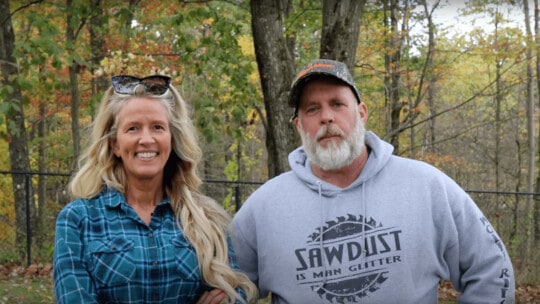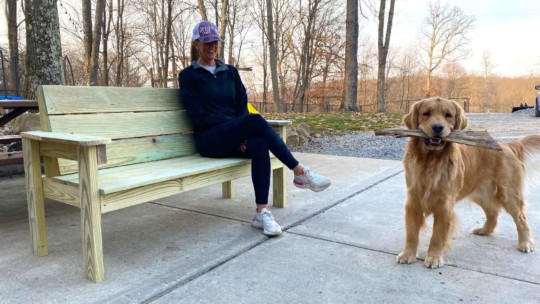In this Backyard Life video, join Outdoors with the Morgans YouTuber Mike Morgan for some trail-building tips on his Western Pennsylvania wooded property. Morgan offers up tips and suggestions trail clearing in the woods—as he’s hiking on his very own!
Morgan and his family live on a large property, approximately 100 acres, most of it wooded. Hence, he’s built a pretty elaborate three-and-half to four-mile trail through the woods. The family uses the trails for hiking, walking the dogs, riding side-by-sides, and gathering and collecting firewood and saw logs for their sawmill. While everyone’s property needs are different, Morgan needed wide, stable trails to access them with his tractors.
Here are Morgan’s backyard trail cutting tips and suggestions.
Why Build a Backyard Trail System
There are numerous benefits to having a nice trail system on your property. Here are a few:
- Trails provide access to portions of your property that may normally go untraveled. For example, a few years back, the Morgans bought some additional acreage that connected to their property. Although beautiful, they had to walk through overgrowth and invasive species, and traverse steep hills to access it. “It wasn’t very inviting to hike down there,” says Morgan. But with numerous paths in the woods, they now enjoy accessing more of their property.
- Clearing trail systems also enable property owners to take friends and guests out for hikes or ATV rides for hours on end.
- Backyard trails can slow be used for wildlife viewing because larger animals don’t like walking through thick brush either.
Trail Building 101
If you’re considering building trails to access different parts of your property, Morgan emphasizes the importance of first determining your intended purpose is for creating them. If you plan to drive tractors on a trail, that requires a wider trail. “You have to consider how you’ll be using trails, both now and in the future?” he says.
Because Morgan likes to use his tractors on-trail to collect logs, he needs his trails to be wide, although not very steep. To make this happen, he sometimes had to clear trails to avoid certain areas of his property that were too hilly. This sometimes resulted in longer trails.
What Type of Equipment Do You Need
Over the years, Morgan has used all types of trail-building equipment. He’s used a mini excavator, skid loader outfitted with a forestry cutter, tractors and brush hogs, grapples, and a track skid loader.
Trail Cutting Techniques
When building your trails, Morgan recommends keeping them relatively level, although not perfectly flat. Doing so will allow them to lean slightly to the low side to keep water from laying on the trail and, in turn, your trails from turning to mud.
Morgan’s trails are about 10-feet wide. However, he maintains about a 12-foot-wide total clearance so he can carry 10-foot logs out with his tractor’s grapple. This is likely wider than what most people need, he says, but it works for his purposes.
Surfacing the Trail
While some folks apply aggregate like rock, mulch, or wood chips to their trails, Morgan opts not to. Wood chips work for hiking trails, but tend to retain moisture and break down. Over time, this will turn to mud, especially if you’re driving a tractor over them. Morgan has found that the more he uses his trails, the more compacted they get. And, if a new part of the trail does get really moist, however, he’ll then use rock to help tighten it up.
The Art of Trail Clearing
Where you make your paths go, is really like art. Their beauty is in the eye of the beholder. Sometimes it’s nice to have a trail that runs the rim of the property. But, it really depends on where you want to get to on your property and how you want to use the trails, says Morgan. No matter where your trails go, Morgan suggests using ribbon to make building it a bit easier. Just hang it from tree branches every 75 or 100 feet, he says, to know the general direction you’re heading.
One of Morgan’s trails leads to his hunting blind, which was a lifesaver when building it. “If I had to carry all of my materials back there, it would’ve taken a long time,” he says. For the most part, Morgan simply works on his trails in his spare time. But, he says to make the job easier—and worth considering if you have a lot of trees or invasive species— is to find a track skid loader outfitted with a forestry cutter. Morgan used one—a diamond disc mulcher—and was able to clear a mile or so of trail in a weekend. “If you’re doing that by hand, that would take two summers,” he says. This may cost a bit of money, but he says it’s definitely worth the investment.



